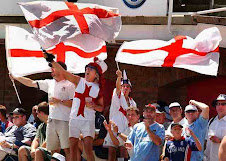Wednesday 18 May 2011
‘I do’
Curious how we still assume that these are the climactic words in a wedding ceremony – when any one of the millions who like me were watching the Royal Wedding will know that the words are actually ‘I will’. A modal verb of desire rather than one of action.
The recent Royal Wedding was shown live on the main South African TV channel and watched – to my surprise – by many of my South African friends. But they did not quite get why this was such an important national occasion. One friend texted to ask: “What’s nice about watching 2 people getting married using the taxi-payers money?” I love the idea of paying for the nuptials by levying a special charge on people who use black cabs!! But then since South Africa has a president who is about to get married to his 5th wife I can see why state weddings might not have the same sense of specialness!
Our State President has been in the news recently not so much because of impending confections but because of impending elections. Although they are local rather than general elections, 20 million voters across the country will be voting for municipal councillors and mayors. I am not one of those 20 million but, since the day is a national holiday, I have been using it to contribute in other ways. Together with Bandile, our 18-year-old intern voting for the first time, I joined hundreds of volunteers mobilised by the South African Council of Churches as an ‘election observer’. We were in Orlando High School in Soweto this morning by 6.30am to check the polling station and see that the box was empty before it was sealed. And we then had the privilege of watching the young, the old and the extremely old, exercising the democratic right for which they had for so long struggled. By complete coincidence (honest!) we ended up at the same polling station as one of the leading ladies in that struggle – Winnie Mandela. This only further reinforces my colleagues’ suspicions that I only ever do things when there is a TV camera or a microphone nearby!
Normally, the outcome of South African polls is not a matter of great speculation – at the last general election the ANC got 66% of the vote; it is no wonder that they get away with calling themselves ‘The Ruling Party’. So I shall probably not be staying up all night to see the SABC results programme, even if my friend Eusebius is manning the swing-o-meter.
But this time there is a slightly different tone in the air. Local municipalities are responsible for the sort of things that no one cares about till they go wrong – waste collection, electricity, water, sewage. But in the last few years they have been going wrong, and the usually passive voter , taken for granted by the ANC, has been taking to the streets in protest. This country, we now know, can deliver a spectacular sports event to international standards. And yet there are still burst pipes that go un-fixed, rubbish that lies festering in the streets, and communities that are without power for days. Surely it cannot be that our politicians care more about the opinions of overseas visitors than of domestic electors?
The protests are in some way reassuring for the future of democracy – people are no longer putting up with bad service. But how will the vote? Where will they put their cross, their electoral ‘I do’ on the ballot? Up to now, people will tell you how fed up they are with ANC politicians but then continue to vote for the ANC. But this is part of a pattern. Despite incompetence and corruption, Congress ruled India for most of its first 50 years and the RPI ruled Mexico for 90. Zuma looks even further ahead. He recently claimed that the ANC would rule till Jesus returns! But may be Jesus is coming sooner than expected – at least in a few towns and cities where voters can no longer be bought off with empty promises.
At this point I have to confess that I was not watching Wills and Kate (and Harry and Pippa) on SABC but rather on the BBC because I was back by happy coincidence within her Majesty’s realm. I was thus able to drink in, at first hand, the pomp and splendour and dresses and uniforms and sheer loveliness of it all. I am not really much of a Romantic or a Royalist but on this occasion I indulged – and I am not ashamed to admit it. As an image consultant if nothing else, I admire the ability of the royal family to help us feel good about ourselves. You can see that for example in the reaction of my friend Bryan when he got a dose of the special dust as he greeted the Duchess of Cornwall to Myddelton House Gardens.
I had watched the wedding from Devon, in a beautiful fishing village of Cawsand over the harbour from Plymouth and accessed by a charming toy boat. In fact, everything about the place – the beach, the congregational church, the pubs, the main street and the bunting – was charming toy town. I had to keep reminding myself that this really was England and not some Disney version of it.
I had gone down there with my friend Shannon, en route not to the Royal Wedding but to a Real Wedding (an extra pun there for the Spanish-speaking readers!). A former colleague of mine at CAFOD, Simon Giarchi was getting married the day after the Prince . I do love the eccentricity of posh English weddings – the photo calls, the standing around for hours drinking but not eating, the random re-connections with people you have not seen for years, the speeches and then – most importantly the 1970s disco. Can a wedding be complete without a ‘Dancing Queen’? There were even plenty of kilts there courtesy of some Glasgow Italian relatives. But thankfully there was not a re-enactment of the dramatic moment when the fat old queen in the skirt dies in the middle of an overly energetic reel – so on this occasion, at least, it was 1 wedding and no funerals.
The trigger for the visit was in fact neither of the weddings but the 21st birthday of my god-daughter Myfanwy-May (aka ‘Vanny’). We have always been close and I was delighted when she came to visit me in Rhino Camp and then later lived with me at the Garden Flat. I recall one morning when I was letting some builders into the flat and Vanny came out of her room, dishevelled in a bath robe yet as beautiful as ever. Then from the same room there followed a second beautiful 18-year-old girl in a nightgown; and then a third one in pyjamas. The look on the builder’s face was a picture!
Vanny has the honour of being senior god-child, the first in a long line, of beautiful/ charming/ intelligent/ entertaining children of various friends. One of those parents once explained to me why I was such a popular god-father: “you’re the only person we know who actually believes in God!” And I confess that I take the ‘god’ bit of being a godfather seriously. I have actually had very little impact on the religious allegiance of my godchildren – Vanny announced at an early age that she was an atheist and then, even worse, chose Cambridge over Oxford. Nevertheless, when 21 years ago, I stood in a church and made the baptismal promises on her behalf I replied with conviction to the questions posed by the priest: “I do.”
Tuesday 5 April 2011
Diamonds and Clubs
When I was living in Northern Uganda you might have justifiably felt sorry for my cultural deprivation. The music life was what the kids created in chapel; the theatre scene was our back-of-the-truck drama group; the art-scape limited to what we could do with a few coloured pencils. No wonder I got parcels containing theatre reviews, ballet brochures and opera DVD’s.
But Jo’burg is a very different part of Africa. Here there is culture in spades – not to mention the diamonds and clubs of the title. For example, in the last 2 weeks – admittedly an especially busy period – I have managed to attend a Shakespeare play, a musical, a book launch, a comedy show, a rock concert and a classical concert. The week ahead promises an opera, a film festival, a new drama and a passion play.
The two concerts were neatly linked by the name ‘diamond’. The classical concert was organised by Fr Russell at Trinity Church to mark the installation of the striking new Stations of the Cross that he had commissioned. Far from being the dark, recessive, predictable images that hang round the sides of most Catholic churches, a local artist Joseph Capelle has produced arresting and sometimes disturbing paintings in bright and bold colours. In tune with art designed to shock rather than soothe, the performance chosen was of Haydn’s ‘Seven Last Words from the Cross’ and it was given by a local string quartet led by the brilliantly (!) named Samson Diamond. Two of the group had been members of the famous Soweto String Quartet and, after music studies overseas, returned here to contribute to the surprisingly good classical music life of Jo’burg. To be fair, this is not London or Berlin or New York. But it would not play second fiddle to somewhere like Leeds or Boston: a reasonably good city orchestra, a decent level of music training, and smaller groups often linked to churches or universities giving creditable performances of repertory works. Certainly not a starvation diet.
From the sublime to the not quite ridiculous, the following night I was back in the mega-stadium Soccer City for a concert by Neil Diamond! I am not afraid to vaunt my 1970s credentials and admit how much I enjoyed that ‘beautiful noise coming down from the streets’. And if I was up on my feet, swaying from side to side in time to ‘Sweet Caroline’, it was a madness I shared not only with a very impressive septuagenarian but with 52,000 of his fans. The stadium was packed –in part, as you might expect, with people of an older generation (we saw at least two walking sticks though no zimmer frames!). However, there was also a surprisingly young crowd of 20- and 30-somethings, drawn in to the cult by the fact that a famous Afrikaans pop star does a lot of Neil Diamond cover versions.
That explained the age diversity in the audience. But it also explained the lack of colour diversity. There may have been 52,000 people but I swear – if you did not count the people selling drinks and one of the backing singers – I was the only non-white person in the entire stadium. The last time I experienced cultural apartheid like that was when I went to Glyndebourne.
We do get a fair share of big name concerts here – Andrea Bocelli and U2 both dropped in as part of their world tours; we are promised Michael Bublé and Kylie Minogue before the end of the year. It is at least a way of filling some of the magnificent stadia that were built for the World Cup. And of course it enabled Bono to demonstrate again how much he knows and cares about the real Africa – as exemplified by the charming advert in the Economist where he is shown as having flown his private jet into a desolate field in ‘Aaafrica’, with nothing between him and the hardships of the bush but a selection of Louis Vuitton luggage. My brother would have been proud!
The lack of diversity at Neil Diamond was, I am afraid, not untypical. The exceptions to this are noticeable, when they happen. For example, the comedy show that I attended was by an excellent young parodist called Trevor Noah (who delivered a hilarious skit of President Jacob Zuma trying to ‘friend’ Barack Obama on Facebook). His audience was an amazing cross-section of white, black, Indian and coloured (to use the local categories). (See also my blog on www.iol.co.za for more on this).
But all too often I find myself at a show where the audience is almost entirely white; or at one where the audience is almost entirely black. As anywhere in the world, particular performers and particular categories of culture have their groups of followers. It is just that, this being South Africa, by and large the dividing lines are lines of colour.
The same is true of the club scene. I have the good fortune of living 5 minutes’ walk from 7th Street, one of the best known night spots in the city. You will understand, I hope, that even if other middle-aged Church workers are tucked up with their cocoa and a copy of ‘The Tablet’ by 10pm, I feel obliged as your intrepid reporter to savour the delights of the local night life. We have great bars and clubs with great names – Ratz, Liquid Blue, The Loft, Lemon8, the Cats Pyjamas. And each has its own vibe, and clientele, and tastes, and music. But it is all too often the case that I look around and notice that I am the only non-white person in a very white crowd; or equally the only non-black person in a very black crowd. Or I might visit the Shebeen (informal bar) that my friend Stephen has attached to his home and, since it is in a coloured area, you can guess who is there. Whilst that does not surprise me in white areas like Rosebank (where I never go) or in black areas like Soweto (where I often go), it is unfortunate that it happens here in Bohemian Melville. The street may contain great diversity but it is a salad not a soup.
My sense of adventure means that I am undaunted by this. I blithely wander into places that other Jo’burgers would avoid, using my accent as a passe-partout that excuses any social gaffes I might inadvertently make. And, so far at least, my head has remained connected to my shoulders.
But for all that I still mostly seek out Jo’burg versions of the kinds of culture that I would enjoy in London: plays, musicals, dance performances, gentle concerts. Despite the cajoling of my friend Adi, I have yet to more than dip my toe into the most vibrant part of the arts scene here which is contemporary African music. For, just as Jo’burg has asserted itself as the commercial capital of the continent, it is increasingly laying claim to being the cultural capital with musicians, composers and dj’s from across Africa converging on the Rand. Though he is not himself musical, even my housemate Ulwazi has managed to tap into this world through his circle of friends. There has recently been a steady stream of bright young things eating and drinking on our terrace and discussing the latest club date/ gig/ promo/ recording session with which they have been involved.
Much like Lady Bracknell I hang around the edge of these young sets, picking up snippets of their conversation and trying not to sound too desperately out of touch. I wanted to tell them that my recent musical highlights have been a singer from the 1970s and a composer from the 1770s! But I am not sure they would understand. Ah well, Song Sung Blue….
Wednesday 9 March 2011
Blogs and blogging
Having not posted for several weeks, I hope that a few of you at least were wondering if I had run out of things to say. In fact, my excuse is the opposite – I have been too busy writing for other outlets to sit down to tap out a specific piece for my friends and family around the world. You see, I have entered the world of official blogging.
When this mailing started almost 10 years ago, as I was about to enter the Jesuits, the word ‘blog’ was still waiting to be discovered. I created for myself a crude strategy of typing out some thoughts once a month and distributing them through yahoo groups (remember those?) to people I knew. It was in fact mostly a way of getting round the e-mail restrictions in the novitiate. But now this vanity of sharing your thoughts with dozens of people has become a whole new sector of social activity. Even before it was called that, I was already engaged in blogs and blogging.
(Incidentally, I was at a hotel a few months ago and noticed on the bookshelf a rather under-thumbed book entitled ‘Frogs and Frogging’: a guide for wannabe batrachiologists visiting the area. I imagined a whole series being spawned (!) from this initial volume: ‘Logs and Logging’ for lumberjacks, ‘Clogs and Clogging’ for our Dutch friends, my own ‘Blogs and Blogging’ and for those looking for unquestioning affection ‘Dogs and ….’).
I don’t really like to think of these newsletters as a blog. Not just because you can’t comment, but also because, by and large, I personally know all the readers of this piece and so can position the content to suit. Religious enough for the Jesuits and yet secular enough for the Johns; serious for Clara and comic for Catherine; long enough for Mary yet short enough for Mark; reflective for Beth and deflective for Bob. (I did, however, got a shock a few years ago when visiting India and meeting the auxiliary Bishop of Bombay. He greeted me by saying: “It is such a pleasure to meet you – your aunt has been forwarding me your newsletters for years.” I had to do a quick check to make sure that I had not been too openly heretical.)
But now I have a proper blog: www.iol.co.za/blogs/raymond-perrier-1.1011169 Independent On-Line is a consolidated site for a number of newspapers in South Africa. With 4 million hits a week, it claims to be the most visited news-site in the country. Their editor – met at a Jeremy Sampson drinks party: the Interbrand network continues to sparkle – asked if I would join their small panel of regular bloggers to cover ‘philosophy, ideas, religion, that sort of stuff’.
Would I like to write? Would I like to be published? Is the Pope German? As a moth to a flame, I have been drawn to the lure of yet more fame and even less fortune (of course they don’t pay). So now I have the first 6 weeks under my belt and, the brief being as wide as it is, I have so far covered: Muslim-Christian relations, gay rights, Valentine’s Day, Lenten sacrifices, selling body parts as a way of selling a movie and whether or not an ANC membership card will get you into Heaven!
Who knows what will come next? I certainly don’t; like many a weekly journalist I am beginning to dread Wednesday mornings and the pressure to come up with an idea to turn into 500-1000 words for approval and submission by Thursday afternoon. But Oxford essay-writing technique has come back into play: so I think about it a little in the days beforehand, forget about it, and then wait until the last minute when with a huge sense of panic and adrenaline, I turn off the phone and just start writing!
I have no idea yet who, if anyone, is reading. But I would encourage you to do so – or at least to ‘hit’ the page, since the more hits I get the more the editor will like me. If you fancy making a comment, all the better.
One person who did read, and like, was a local BBC producer. He saw my piece about gay rights, sparked by the mysterious death in Uganda of the most well-known gay activist, David Kato. This happened in the middle of an attempt by another Ugandan David (Bahati, an MP) to introduce a bill making certain homosexual acts punishable with life or even with the death penalty. As a director of a Catholic institute I, of course, have no views on gay rights; as someone who worked in Uganda I do have some insights into the peculiar way in which homosexuality is claimed to be un-African by many Ugandan Christians. And this was mentioned in my blog.
Thus, soon after, I found myself in a TV studio debate hosted by Zeinab Badawi (“that’s Zay like Say and then Nab”) and sitting opposite the very same Ugandan MP. I met him in the green room beforehand and we had a lovely chat about Uganda and the River Nile. They say that, if you met him, Hitler was also very charming though I think the Ugandan is rather more handsome. As long as I have not been edited out you may catch my contribution. The debate will be aired this weekend on BBC World News TV (Saturday at 09.10 and 22.10 GMT, Sunday at 15.10 GMT) and also on BBC World Service Radio (Saturday at 18.06 GMT, Sunday at 13.06 GMT).
Some of the contributions were deeply moving: the lesbian woman who is a ‘sangoma’ (traditional healer) and appeared with her wife and daughter; the former president of Botswana who regretted he had not done more when in office to defend what he now sees as a mater of human rights. Unfortunately, the crowd turned out to have been recruited more for their ability to support a claque than their willingness to engage in debate. In the end it all became a bit too Jerry Springer – weirdly-dressed banshee gay activists screaming against clean-cut intensely believing African Christians. Like an old iridescent bulb it created a lot more heat than light.
I have also been involved in some calmer encounters with the secular media. I have mentioned before Kate Turkington’s Sunday night programme on the main talk radio station in South Africa ‘Believe it or Not’. Last week I managed to get an interview for a visiting American Jesuit who worked in New Orleans just after Katrina. He also promoted the daily e-mail reflections that we will again be sending out to MPs during Lent. But as I was listening I realised that he had missed the moment to tell people how to get the reflections themselves. I shouted at the radio but Ron did not hear me. So I took a chance and sent a text message to the presenter and 5 minutes later on air Kate said “And Raymond, Fr Ron’s boss, has just texted to remind me to give the sign-up address!” (In case you are wondering it is: database@jesuitinstitute.org.za).
And now a week later we just got another slot on the programme (Kate worries openly about a Jesuit takeover). A group of MBA students from Georgetown are consulting for us on how to make use of social media so Fr Russell was interviewed about this together with one of the students. You can hear the interview on: http://www.pod702.co.za/podcast/believeitornot/20110306BESTKATE.mp3
We may still be a small institute but we are certainly getting known: Plugs and Plugging!
Tuesday 21 December 2010
Who’s dreaming of a White Christmas?
Christmas is coming. The days are getting shorter, the afternoons darker, the wind colder, and sooner than usual, the streets whiter. However, down here, 26 degrees South of the equator, it is 26 degrees plus - and none of the above applies. Our days are long, sunny and hot. And getting longer, sunnier and hotter. Because, of course, in South Africa Christmas is not mid-winter but mid-summer.
My parents have just arrived to join me for the great shutdown in South Africa when Summer holidays and Christmas holidays coincide to give everyone an excuse to shut up shop and head for the mountains or the beaches. I tried to set up a meeting with someone recently and he suggested the 23rd March because ‘nothing much happens around here until then’!
My break will not be quite as long as that, but I will have a few weeks to unwind, travel with my parents, and eat and drink well: though more likely braii-ed prawns, ice cream and chilled beer than stuffed turkey, mince pies and mulled wine. It is curious, though, how Christmas traditions that make no sense still get retained here. So South African homes find space for pine trees even while gardens are in bloom and we don’t need evergreens to remind us of life; people in carol concerts sing with gusto of frosty wind making moan; and one local shopping mall even set up a big bubble with a snow machine so that people could enjoy the cold.
Quite apart from the weirdness of spending money on snow in Africa, I find it curious that people here replicate a particular norm for Christmas. Tradition, films and Coke adverts have succeeded in convincing us that the European/ American version of the White Christmas is the one we should all be dreaming of.
But in South Africa, ‘white’ is a reference to more than just snow, even if it is deep and crisp and even. ‘White’ is a word that conjures up feelings that are still deep and crisp and speak of great un-even-ness. 16 years after the arrival of democracy, there may be a substantial middle-class of prosperous, educated, professional men and women with black skin. But it is still the case that the darker you are the less likely you will be wealthy, or have a job, or have access to decent health or good education, or own a car, or live a full number of years.
We are, in fact, officially the most unequal country in the world. And such a high degree of inequality can continue because the haves and the have-nots rarely encounter each other in any meaningful way. While that happens in any class-ridden society, it is more noticeable here, than in say India or the UK, because the bar that separates those groups is still largely a colour bar.
Thus, although legal barriers have come down, the economic and social ones are still there. We can all use the same buses – except you never see white people on a bus. We can all shop in the same malls – but Sandton City is 90% white (apart from the shop assistants) and Maponya Mall in Soweto (with all the same shops as Sandton) is 100% black. And the places where I go drinking and dancing are open to everyone: but strangely I am often in bars where everyone is white except me, or in clubs where everyone is black except me. (And the same is true of the churches.) We may be a rainbow nation but the colours of the rainbow still stay in their stripes.
I was recently away in an outward bound type camp in the Magaliesburg, a few hours north of Jo’burg. I was with a group of 60 older teens as part of a programme that I am doing with them and a prestigious local business school; and there was another group of teenagers also there. (There was also a group of young professional rugby players but that will have to be written up elsewhere!) Our group were young people leaving school and trying to work out what to do next; the other group were head boys and head girls from state schools in the area. What was curious was that in my group all of the young people were black and in the other group they all were white. Because even if they were state schools the second group were from Afrikaans-speaking schools and so, de facto if not de jure, were racially segregated. So we could all be in the same place, and enjoy the same facilities, but our 2 groups were still 2 distinct groups and not 1: a reminder of where South Africa is today.
As I said, my young people had all just left school but without plans for further study or jobs or apprenticeships. They were just on the point of drifting – the business school is determined to make sure that they do not drift. We have been taking them through a mixture of boot camp, mini-MBA and finishing school: after climbing obstacle courses in the mountains they spent 2 weeks working through the much harder obstacles of writing CVs, practising interviews, making presentations, and working in syndicates. Away on the weekend they were big children; by the end they were young adults. They have even been physically transformed – turning up in their smartest clothes and getting up at 5.30am in some cases to make sure they are at BizSchool on time.
One of their tasks was, in the manner of ‘The Apprentice’, to work in teams to create and then sell a product at a local market. I was one of the judges who sat and critiqued their mini business plans and marketing strategies before deciding whether they would get a $70 loan. I suspect my performance was less Donald Trump or Sir’Alan and more Graham Norton or Bruno Tonioli but then our intention was to ‘nurture’ and not ‘torture’. Eventually all the groups got their loans (after some major overhauling of their financial plans) and last Saturday they did their best to sell their bath salts, boerewors rolls, hand-woven bookmarks, green Christmas decorations and doggy treat bags. Few of them made any money but they all had a good taste for enterprise – both sweet and bitter.
Part of my role in the programme was to give them a taste of silent self-reflection: we do not only want them to learn how to do well in life but also how to do life well. So we ended each day with a version of the ‘examen’, the Ignatian prayer which gives us a chance to replay the video of the day, this time more slowly, and pause over the parts that merit gratitude or resolve to change. We aim to equip them to cope better with disappointment when it happens and also to deal better with success if it happens.
If their dreams this year are for a white Christmas it is probably less out of desire for snow and more a hope that they might access the lifestyles that they see their paler fellow-citizens enjoy. I hope that they are learning that only hard work and a willingness to collaborate will get them there. And I hope that the Afrikaans teenagers learn the same. And if they could all learn that at the same time and in the same place, we might be able to dream not of a white or a black or a brown Christmas but of a Christmas worthy of the name of Christ.
Friday 19 November 2010
The Sound of Silence
Some of you living in the UK have been watching ‘The Big Silence’. (If you have not, or could not, you can ‘tube it up’ in 12 x 15 minute episodes at www.youtube.com/watch?v=A5AhtmlL81U or see www.growingintosilence.com/ ).
This BBC programme followed on from the hugely successful ‘The Monastery’ in which 5 unlikely men agreed to spend 30 days living and working in a Benedictine Monastery south of London. In the new programme, 5 men and women, spend a week on a silent retreat at the Jesuit-run St Beuno’s in North Wales and then have to integrate that experience into their ordinary lives. (Some of you may recognise in the programme Fr Brendan Callaghan who was one of the priests at Gordon’s funeral).
Long-standing readers might recall that my own vocation journey began initially at Worth Abbey and then continued through Jesuit silent retreats first of 3 days, then 8 days, then finally 30 days. And I have mentioned before that, long after I have abandoned many other aspects of Jesuit life, I have retained my commitment to an annual silent retreat. So in September, I took advantage of my UK trip to head to the same St Beuno’s in North Wales and cut myself off from all distractions for a week.
I do this in part because one of the main activities of our Jesuit Institute is to offer silent retreats, and to train people in how to direct someone on a silent retreat: not to use the product myself would be a bit poor. But I also do it because it is a complete gift to myself. I am just as busy, professionally and socially, in Johannesburg as I ever was in London, New York or Rhino Camp. So making sure that within my year there is some opportunity to pause and reflect is very important. It is also the only week of the year when I sleep 10 hours a night, don’t drink alcohol, go for long walks and have baths rather than showers: restoration for the body as well as the soul!
St Beuno’s, some of you will have seen, is in a stunning location, overlooking the Clwyd Valley and the North Wales Coast with views, on a clear day, across to Snowdonia in one direction and the two cathedrals of Liverpool in the other. And, unusually, I actually had a number of clear days! The last time I was there on retreat was 3 years ago just as I was leaving the Jesuits. So it was especially moving to be back there happy in my life as a non-Jesuit and yet once again part of the wider family. What happened in the Retreat is between me, God and my retreat director. But it was a good experience of confirmation and peace – what in technical Jesuit terms is called ‘consolation’. There was at least one very practical outcome: I returned to South Africa and committed to stay here at least until the end of 2012.
Meanwhile, if the TV programme is tempting you to spend some time in silence yourself and you fear that you could not do it – I hope you are reassured to know that even a chatterbox like me can go on retreat and enjoy it!
You might even be tempted to do a retreat in guaranteed sunshine here in South Africa. We offer mostly 8 day retreats – although a colleague of mine does 3-day taster weekends. At the other end of the scale we have just started a 30-day retreat which is being attended by men and women, clerical and lay, Catholic and non-Catholic. That last part might surprise you since retreats seem like such a Catholic activity. But part of the success of our retreats and training programme here is that it is entirely ecumenical. The group about to graduate as ‘spiritual directors’ (after a 3-year part-time programme) consists of Catholics, Methodists and Anglicans (including a male priest, a woman priest and a bishop). In fact the 30-day retreat is being hosted in a new retreat house run by Afrikaaner Methodists. The days in which Catholics were seen as ‘the Roman Menace’ are another part of South African history consigned to the past.
Teaching people in a religious context to appreciate silence is hard enough. Even harder is persuading busy school principals or business leaders that it is something for which they should set aside time. But, following the Ignatian tradition of working outside traditional Church structures, that is just what we have been trying to do. I have written before about the 3-year leadership development programme we are running with rural school principals. What we are trying to do in 3 years with the principals, we are attempting at least to start in 2 days with business leaders.
We have developed a Leadership course that challenges business people to be truly authentic leaders by first of all understanding their own meaning and purpose. The course was triggered by a survey with the SA Institute of Directors that showed that only 14% of directors felt that the decisions they made in Board Meetings were consistent with their own personal values. For some these might be humanitarian or more generally spiritual; but in a very religious country such as South Africa, a good number of business leaders would articulate their own deepest values in religious language. However framed, is there a way that people can appropriately connect their deepest values with their professional lives in a secular multi-faith environment?
The course gives helps people to understand their own core values and deepest desires and also to see their blind spots and limiting beliefs. Whilst all of that sounds quite generic, the reason it works and has credibility is that it effectively draws on the 400-year-old Jesuit tradition of ‘discernment’ though in a way that makes it accessible to people of all faiths and none. In fact in one recent presentation of the course we had Catholics, Pentecostals, Anglicans, Muslims, agnostics, atheists, a Jew and a Hindu. I felt that we were definitely doing something truly Jesuit at the moment on Friday lunchtime when we were sitting in the best business school in town, talking about the value of listening to our hearts, and the 2 Muslims popped out of the course to attend Friday prayers.
We have just run the course at Wits, the other business school, who have also signed us up to offer it to their MBA students next year. So far, we have offered it to over 60 people (including a group of Masters students from the US) and the response has been extraordinary. It is a grace to be able to help people in such a fundamental and personal way.
The success of this might be a purely South African phenomenon. But I suspect it is not. The world over people need to rediscover the value of silence and reflection not as a way of escaping from ‘busy-ness’ but in order to make themselves more effective when they are busy. Or as one of my school principals put it: if I am given 6 hours to cut down a tree, I should spend 5 hours quietly sharpening the axe!
Talking of sharpening axes, my razor blades are resting while my Mo-vember moustache grows apace. The similarity between me and Sammy Davis Junior has been remarked on, even by my elderly actress friend Joan Brickhill. Since she was a great friend of Shirley MacLaine that means there are only 3 degrees of separation between me and my hero! But while the moustache is taking great shape the fund-raising – for the Trinity health clinic to provide HIV tests and anti-retro-viral medicines for homeless men – is not. But you still have 10 more days in November to contribute. And if I don’t meet my fund-raising goal I might just have to keep the moustache, something which I suspect will not be met with silence… To donate: http://uk.virginmoneygiving.com/team/Taches4Trinity
Monday 1 November 2010
Pride and Prejudice
September provided 3 distinct opportunities to reflect on the concept of pride: not the personal pride that is among the 7 deadly sins. Rather I mean the collective pride that comes from identity; a group knowing who they are and presenting that publicly.
I started the month with a visit to the UK – timed not to coincide with the Papal visit but rather for the Bat Mitzvah of the charming Charlotte, middle daughter of 2 of my oldest and dearest friends, Mel and Rob. I arrived at the very grand Liberal Jewish Synagogue in St John’s Wood (‘Catholics go to Lourdes, Jews go to Lords’) dressed in a highly embroidered Indian wedding coat and with my head covered not with a Jewish skull cap but a Muslim prayer hat (made for me by one of my Islamic neighbours in Uganda). Thus, given the regrettable need for tight security in London synagogues, the doorman gave me a very suspicious glare. However, this was soon resolved when Charlotte’s grandmother called across and said to him: “Don’t worry – he’s one of the family!”
And that is indeed how I felt: back with my Jewish family and joining with them in this eventful rite of passage. It was an immense joy to watch Charlotte (like Eleanor 3 years before her) reciting her Torah portion, delivering a heartfelt homily about difference, and being blessed by the presence of her family. And the family was expansive enough not only to include a Catholic Christian but also friends and relatives from across a wide range of Jewish religious belief – from committed and observant relatives, through degrees of questioning agnostics, to hard-nosed atheists. Importantly, while this range might have made it harder for some to follow the ritual than others, it in no way seemed to diminish collective pride in the historical identity being celebrated.
I want to avoid the temptation of drawing a distinction between the ‘religious’ and the ‘cultural’: this is a construct beloved of softer liberal writers. They use it to justify (to whom?) their toleration of the public face of faith on the grounds that it is cultural but not religious. There is a legitimate distinction to be drawn – but it is between the creedal and the cultural. The same religious act can be done but for different motivations – do I abstain from pork because Moses said it was wrong or because my grandmother said it was wrong? do I receive Ashes at the beginning of Lent because I recognise myself as a sinner or because it reminds me of my childhood?
I would argue that religion is the act (that which publicly binds) and it can draw on one or both of those motivations. To affirm a commitment to the creedal statements or the cultural identity – but not to express these in any acts – seems too easy a commitment. To carry out the acts unconscious of one or other set of motivations is empty repetition.
In calling me ‘one of the family’, Charlotte’s grandmother might also have been pointing to a deeper truth: that as a Christian I am a junior member of a wider family that shares Abraham and Sarah as ancestors. One of the most extraordinary parts of anti-Semitism, practiced by so many Christians until very recently, was the complete failure to recognise, acknowledge and thank our Jewish forebears for a key part of our religious inheritance. When working with the Sudanese catechists in Rhino Camp I once asked them what religion Jesus was. ‘Catholic’ – they all replied. Having overcome disappointment of being told that he was not, they ventured with some hesitation ‘Protestant’ or ‘Muslim’ or no religion – and were relieved that those answers were also wrong. They were shocked – as so many Christians are – when they discovered that Jesus was born and died a Jew – and so did his mother!
The current Pope has continued his predecessor’s work in re-building bridges with the Jewish community, reaffirming that the First Covenant remains intact, visiting synagogues, and sharing prayers with Rabbis. He has, however, also been involved in actions – to do with Good Friday prayers and the acceptance of a Holocaust-denying rogue Bishop – that have damaged some of those bridges. Recently at our Institute we welcomed Rabbi David Rosen who has been a key partner with the Vatican on Jewish-Catholic relations. He was actually surprisingly forgiving of these incidents, seeing them as blips on the much stronger path to reconciliation.
Thankfully, when Benedict was in the UK – to coincide with my visit – there were no such blips. In fact, the highly effective Vatican diplomatic corps seemed to win over a British press that had been maniacally hostile to him before his arrival. They drew on an underlying prejudice that assumes that ‘taxpayers’ are ‘people like us’ and do not include Catholics (or Muslims or skateboarders). Thus their cry was: Why should the British taxpayer welcome an anti-woman, anti-gay, mediaeval theocrat who claims to be a Head of State? Strangely, the same accusations are not heard when the Dalai Lama comes to call – if only Benedict smiled more and wore saffron instead of white!
Though my former colleagues from CAFOD were heavily involved in the visit, I enjoyed being entirely peripheral. I did pop into the Hyde Park event to take the temperature. Though much less emotional than John Paul’s 1982 visit, and much more poorly attended, the public events did give Catholics an opportunity to be rightly proud of who we are, what contribution we make to wider society and what a diverse swathe of that society we represent. The tribal pride of being Irish, or hailing from a recusant family, has now become tied in with the truly Catholic pride of being universal. However, as Benedict climbed the platform (to the music of that great English composer, Handel), I feared that the choice of “And he shall reign for ever and ever” was taking us dangerously from a justified pride back to the triumphalism that for good reason provoked English anti-Catholic prejudice for many centuries.
By coincidence soon after returning to South Africa, there was another jamboree in a park also with strange music, also with men in dresses, also with rituals that baffled the outsider – another group of people proud that they could celebrate their identity in public after years of marginalisation. Africa’s largest and oldest gay pride event takes place just on the edge of the Jesuit parish in Johannesburg and I was personally proud that our (straight) parish priest published a trenchant defence of the event.
One young man from Malawi, attending his first ever Gay Pride, told how at home a friend had been imprisoned for 15 years for being gay and another was in fear of his life. Perhaps that is a human rights issue on which Peter Tatchell and Benedict XVI and the good Rabbi could all be united.
My belief is that pride in who one is is an entirely appropriate response to a God who has taken the trouble to make each one of us utterly unique: Jewish or Gentile, believer or secularist, straight or gay. To quote an esteemed Rabbi from the Bat Mitzvah prayers: “When I die and G*d asks me why I was not Moses, I will have a ready answer. But if G*d asks me why was I not myself, I will have no answer.”
Thursday 2 September 2010
Mother India
Let me defend this blog about India by drawing 2 important links between South Africa and India. It was exactly 150 years ago that the first Indian workers were brought to Natal by the British, confident that they would be as happy to work for low wages in one part of the Empire as in another. And it was in South Africa that the young Cambridge lawyer Gandhi had his first experience of racial discrimination and where he then developed and first tried his strategy of ‘satyagraha’ (non-violent resistance).
South Africa still has a sizeable population that dates from those 1860 indentured workers (and others who have come since). Both Muslim and Hindu, they add to the religious and cultural mix of the country. The 4th ‘race’ under Apartheid – after ‘European’ (white), ‘native’ (black) and ‘coloured’ (brown) – was Indian (a different brown!). This caused endless confusion for the people on the borders of these categories but even more so for people who did not fit in anywhere: Chinese ended up being ‘Indians’, and the Japanese were allowed to be ‘Europeans’.
Being in South Africa has made me much more conscious of being Indian because that is the group to which I am assumed to belong. For example, when I opened a bank account I was asked by the form filler which ‘cultural grouping’ he should mark me down for. I was about to say ‘metropolitan sophisticate’ until he pointed out that the options were ‘black’, ‘white’, ‘coloured’ or ‘Indian’. In the new South Africa you can now self-ascribe your identity (no more pencil tests to see if you hair is curly or straight). But the options are as limited and as ludicrous as before.
It would be tempting to make use of this politically – after all I am a member of one of the ‘previously disadvantaged groups’. But I limit my plastic Paki status to moving freely in Fordsburg, the ‘Indian’ part of Johannesburg, and feeling at one with my brothers as I tuck into a Masala dosai or bargain for cheap shoes or get my hair cut. (In fact, for £15 I get not just a hair cut but an hour’s worth of pampering with head massage, facial, threading and shoulder rub. It is called the complete man – though I think they are over-promising!). However, I should be more careful. I was having a boozy lunch the other day when an ‘Indian’ Muslim came in to the restaurant and I said ‘Salaam Aleikum’ to him. As he replied he saw my wine glass and my pork chop – and all this during bright sunshine in Ramadan!
Anyway, whether tourist, identity seeker or just ‘PIO’ (Person of Indian Origin) I travelled off to India earlier this month. My first visit was to Goa to see aunts, uncle and cousins. Despite the fact that it was monsoon season and so we went nowhere near a beach, it was a great joy to be there and especially to stay in the beautiful 400 year old family home of my cousin Sushila. I am struck how, even with very different upbringings and educational and professional experiences, she and I can connect and find that so much of our world view is shared. There is definitely something in that concept of twin souls.
My mother’s eldest sibling, Uncle Francis, now 83 and the best Jesuit this family never had, was as welcoming and as proper as always. He has the most extraordinary range of interests and surprised me at how knowledgeable he was about the World Cup (and especially Shakira). As I was leaving he showed me a pink folder (really!) in which he had meticulously collected every piece of writing of mine since I started in 2001. I guess this piece will soon join the others.
From Goa I continued to Delhi where my friend Shannon (born in India, living in the UK, named after an Irish river) was working as an intern. He is spending his summer collecting data on public defecation in Himachal Pradesh (statistics I think rather than samples!). He is seriously committed to using his British degree not to escape India but to return and contribute to its development. In an age where it is easy to dismiss Generation Y as selfish and materialistic, I have been so often surprised and impressed by young people like him – in the UK, in South Africa, in Uganda and in the US – who do believe that they have a reason to be on this world which is more than just to accumulate electronic gadgets.
Delhi is my father’s home town and I was delighted to be able to go round and visit the house where he grew up (now occupied by American diplomats who were very suspicious to see me taking photographs), the school he attended (one of many!) and the Cathedral where he was baptised (and where we bumped into one of the priests who was an altar server alongside my father 60 years earlier). This year is the 50th anniversary since my father’s own ‘long trek’ (from Delhi to Chelmsford via Pune) and it was good to be able to mark that. In Delhi are also the Pereira/ Perrier family graves including the plot where we laid my brother’s ashes to rest in 2008. I placed an arrangement of 45 long-stemmed dark-red roses there – one for each year since his birth – and then ate a sumptuous breakfast in his favourite 5 star hotel!
From Delhi we continued to Chandigarh, the capital of the Punjab, a city re-designed by Le Corbusier in the late 50s. While the architecture alone would have drawn me there – I have travelled further to see less – there was also a family connection. My mother’s first teaching job in 1960 was at the newly founded St John’s College in Chandigarh, as far as she could get from her father who was expecting her to become a nun. (She didn’t!). I found St John’s and was just trying to explain to the un-co-operative secretary my connection with the school when I noticed high above her head a photo showing the ‘Class of 1960’ as part of the celebrations for the golden jubilee of the school. I leapt on to a chair to see more clearly and there – on Row 3, staring back at me across 50 years – was the face of Miss P. Fernandez!
The final destination was Shimla, the tiny hilltown on the edge of the Himalayas that was the British Summer Capital and from which they ruled (or claimed to rule) 1/5th of the world’s population. Even today to get there requires a beautiful, but un-hurried train journey, that covers 60 miles in 6 hours. There are almost no Brits left in the town but plenty of echoes of them – the mock-Tudor buildings, the Balmoral vice-regal lodge, the Victorian theatre and the former residence of the military high commander in which we stayed and which has tiger heads on the wall! And somewhere in Shimla’s complex ability to accommodate India and Britian, past and present, coloniser and colonised, I found myself one step closer to being able to call India ‘Mother’.
Subscribe to:
Posts (Atom)

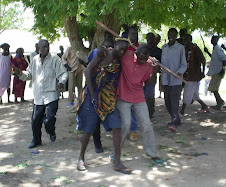



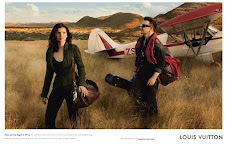

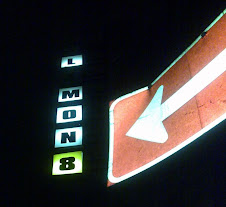
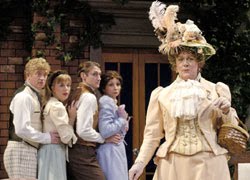
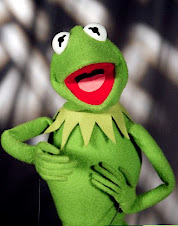

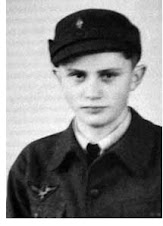
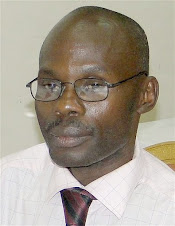

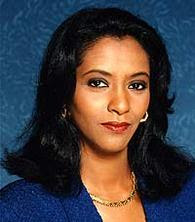

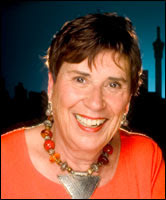


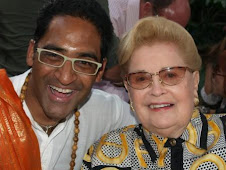
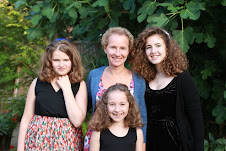

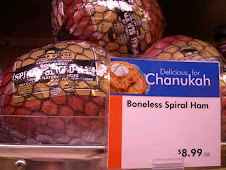
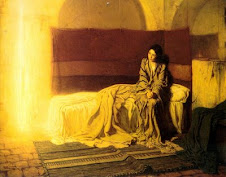
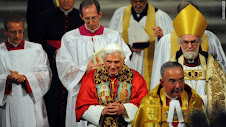

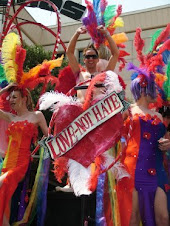

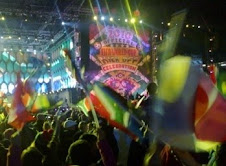

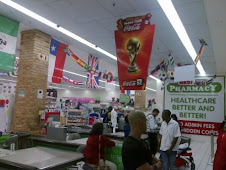
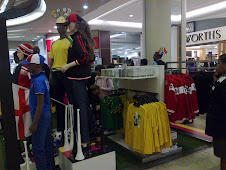

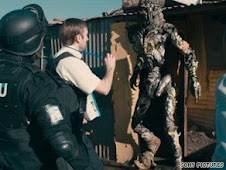
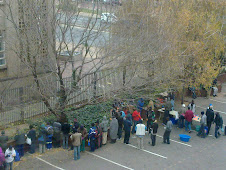

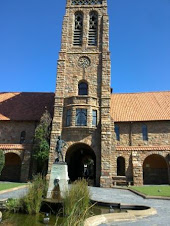
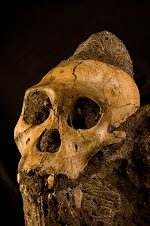


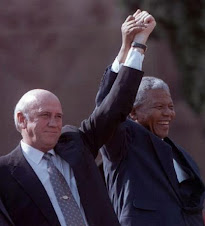.jpg)

